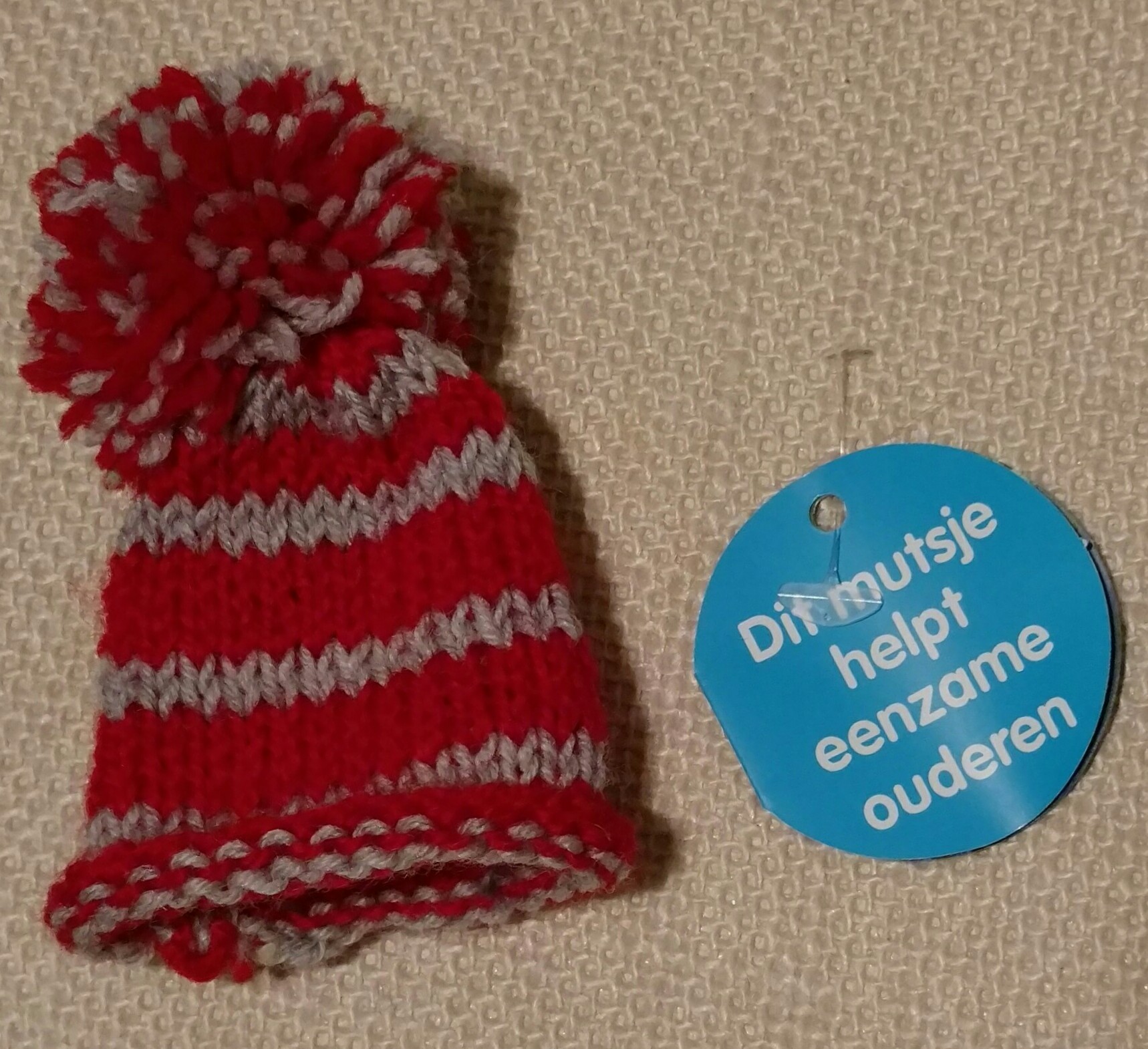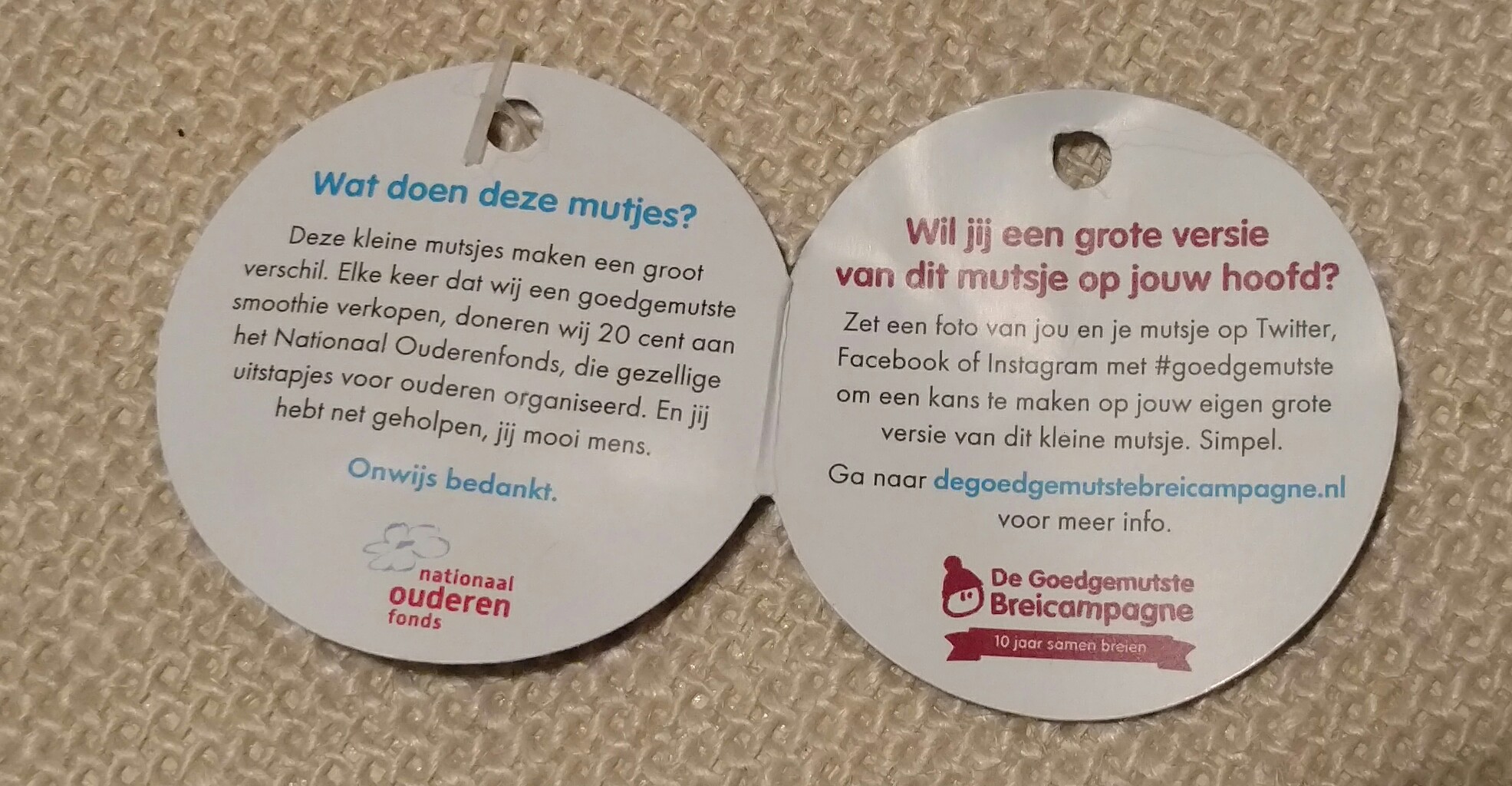Can You Say This Correctly? – 2: Innocent Goedgemutste Smoothie – ei, ij, ie, -je, -pje, -tje Posted by Sten on Feb 9, 2016 in Dutch Language
One of the hardest things about learning Dutch is pronunciation. Whether it is about the ui-klank (the “ui” sound), the G-klank (the “G” sound) or other sounds you might have a hard time with. This series, called “Can You Say This Correctly?”, is about providing a speech example that I recorded. I will give the Dutch text, a translation, and I will add one comment or more for parts that you have to heed for pronunciation. If there are any sounds that you would like to see a post about, let me know in the comments!
OTHER PARTS OF THE SERIES
Part 1: Arla Biologische Volle Melk – how to pronounce long and short vowels
Part 3: Tony’s Chocolonely Melk Passievrucht Yoghurt – how to pronounce the c
Part 4: Tony’s Chocolonely Puur – how to pronounce samenstellingen
Part 5: Can You Say This Correctly? – 5: Fair Trade Basmatirijst – How to pronounce ij
THE RECORDING
THE TEXT
Wat doen deze mutsjes?
Deze kleine mutsjes maken een groot verschil. Elke keer dat wij een goedgemutste smoothie verkopen, doneren wij twintig (20) cent aan het Nationaal Ouderenfonds, die gezellige uitstapjes voor ouderen organiseerd. En jij hebt net geholpen, jij mooi mens.
Onwijs bedankt.
Wil jij een grote versie van dit mutsje op jouw hoofd?
Zet een foto van jou en je mutsje op Twitter, Facebook of Instagram met #goedgemutste om een kans te maken op jouw eigen grote versie van dit kleine mutsje. Simpel.
Ga naar degoedgemutstebreicampagne.nl voor meer info.
THE TRANSLATION
What do these little hats do?
These little hats make a big difference. Every time that we sell a good humored (goedgemutst means “being in a good mood”, and literally “well hatted”) smoothie, we donate twenty (20) cents to the National Elderly Fund, that organises fun trips for elderly people. And you just helped, you beautiful human.
Thanks a lot.
Do you want a large version of this little hat on your head?
Put a picture of you and your little hat on Twitter, Facebook or Instagram with #goedgemutste to have the chance to win your own large version of this small little hat. Simple.
Go to degoedgemutstebreicampagne.nl for more info.
COMMENTS
Click on the red words to hear them. Hold ctrl + click on the link (or cmd + click on the link on Mac) to open the audio file in a new tab, so you stay on this page.
mutsje, mutsjes
Mutsje is the singular of a verkleinwoord, a word that makes the object of the word smaller. So: a muts is a normal-sized hat, and a mutsje is a little hat, or a small hat. This -je ending is used very often in the Netherlands. You will see it everywhere. It fits with the Dutch gezelligheid!
Listen closely to the pronunciation. Also heed forms like -pje (e.g. boompje – little tree) or -tje (e.g. mannetje – little man). You pronounce it all, but they are slightly modified to fit the flow of speech better.
smoothie
Smoothie is an English leenwoord (lend word), a word from English in this case, that was integrated in Dutch. But how to pronounce it? Generally, the pronunciation of the original language is also transferred. So smoothie is still pronounced smoothie. The same counts for example for the French leenwoord “trottoir” (another word for stoep in Dutch). Trottoir is pronounced in Dutch as if it was written trotwaar, following the French pronunciation.
Onwijs
Onwijs is a word that basically means “a lot”, or an equivalent, like “tremendously”. The main reason I put the word here is the use of ij. Click on the word to hear what it sounds like. When an i and a j are connected in Dutch, it is pronounced like ei. When to use ei or ij is not really set in stone, and there are cases where the use of ei has another meaning than the same word with ij. For example: stijl (style) and steil (steep) – pronounced the same, but a different meaning. Which meaning is meant should be clear in context.
Interestingly, ij is often seen as one letter, and thus when it is capitalized, you mostly see IJ. This is not the case for ei, which is capitalized as Ei.
brei
Brei comes from breien and means “to knit”. It is here, because it has an ei in it. Pronounced like ij above, a contraction of e and i. As with ij you just have to learn whether a word is written with ei or ij. Just one thing is clear: if a word ends with -heid, like overheid or gezelligheid, it is always with an ei!
versie
Versie has an ie in it. Click on the word to hear what it sounds like. It looks much like ei, but turned around means something else and sounds different, of course! If you wondered what the contraction of i (listen above to hear what i sounds like, and within a word, in this case stip), and e (listen above to hear what it sounds like. It is pronounced by itself like the e at the end of mutsje).
MISTAKES
Maybe you wondered why two words above are in blue. This is because Innocent made mistakes in its text! Not that this is terrible: mistakes are made everywhere and all the time. But just for clarification, here the mistakes and how it should be. In the original recording, I already said it correctly.
die
This mistake is in the part het Nationaal Ouderenfonds, die gezellige uitstapjes voor ouderen organiseerd. “die” refers to het Nationaal Ouderenfonds, which is a het word. Words with het are referred to with dat. Words with de are referred to with die. So in this case, die should be dat instead, sot that it reads: het Nationaal Ouderenfonds, dat gezellige uitstapjes…
organiseerd
die gezellige uitstapjes voor ouderen organiseerd. “Georganiseerd” is the voltooid deelwoord (past participle) of organiseren. In this case, organiseerd is not meant to be a voltooid deelwoord, but a werkwoord (verb). The onderwerp (subject) of the sentence is dat, referring to het Nationaal Ouderenfonds. Since there is no specific time indication, this should just be in the tegenwoordige tijd (present time) of the verb organiseren. This is organiseert – so that it reads: het Nationaal Ouderenfonds, dat gezellige uitstapjes voor ouderen organiseert.
So one could say that they used a -d where they should have used a -t.
I hope you enjoyed this lesson! Any sounds you would like to have some help on? Let me know in the comments!

Build vocabulary, practice pronunciation, and more with Transparent Language Online. Available anytime, anywhere, on any device.
About the Author: Sten
Hi! I am Sten, both Dutch and German. For many years, I've written for the German and the Dutch blogs with a passion for everything related to language and culture. It's fascinating to reflect on my own culture, and in the process allow our readers to learn more about it! Besides blogging, I am a German-Dutch-English translator, animator and filmmaker.







Comments:
Marian:
Great post and a great cause! Also very well done for spotting and explaining the mistakes. Just a tiny note: the past participle of organiseren is georganiseerd. So the creators of the tag just accidentally wrote a -d where it should have been a -t.
Sten:
Marian, that is very true! Thanks for the addition 🙂